
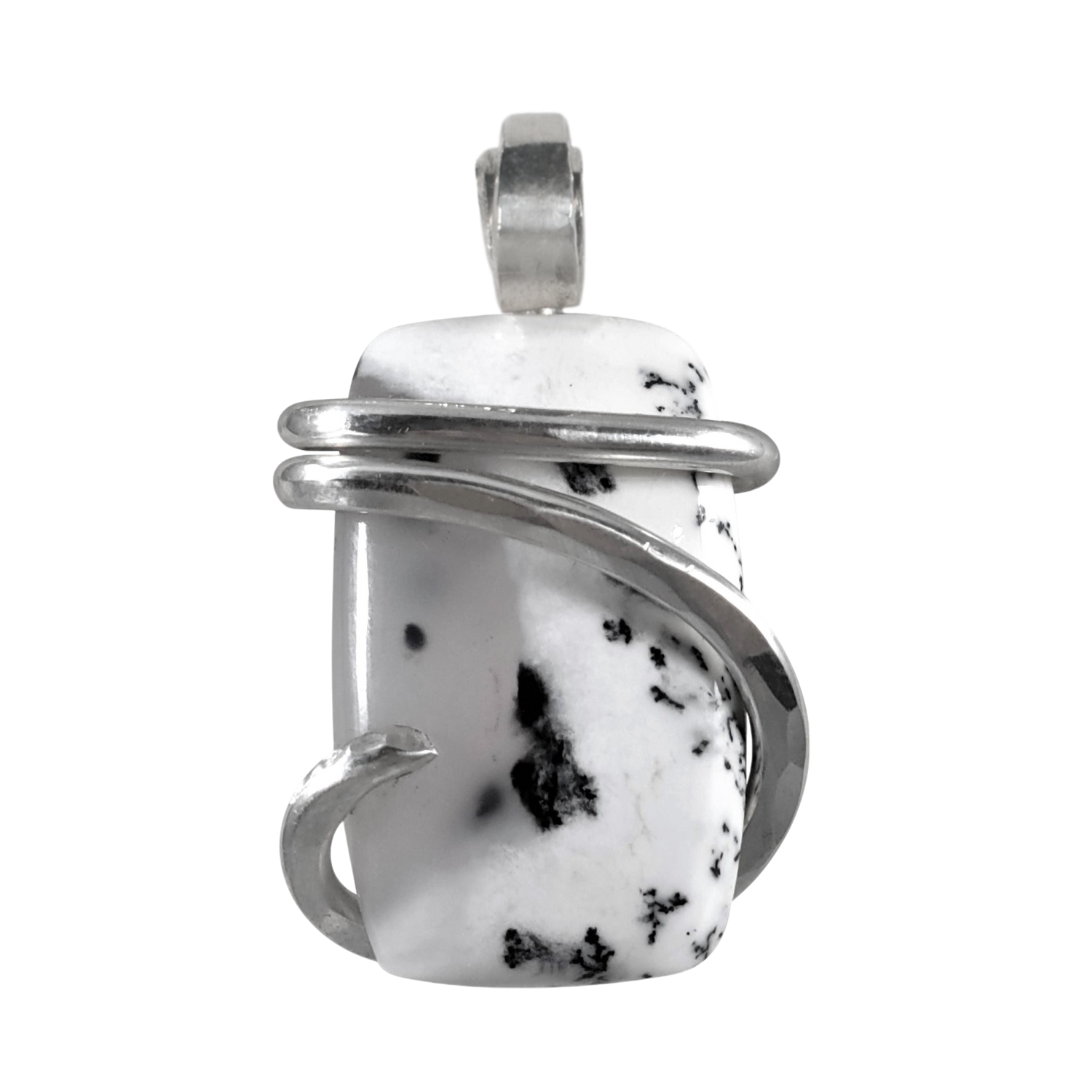
Dendritic Opal
Dendric Opal, also known as Merlinite, is a stone of magic, intuition, and spiritual growth. It has branch-like manganese inclusions resembling those in dendritic agate and is an excellent medium for self-reflection and contemplation on life's purpose. High-vibrating stones link Earth, Water, Air, and Fire for balance, wisdom, and ancient knowledge. It promotes mental clarity and mastery of self and the world.
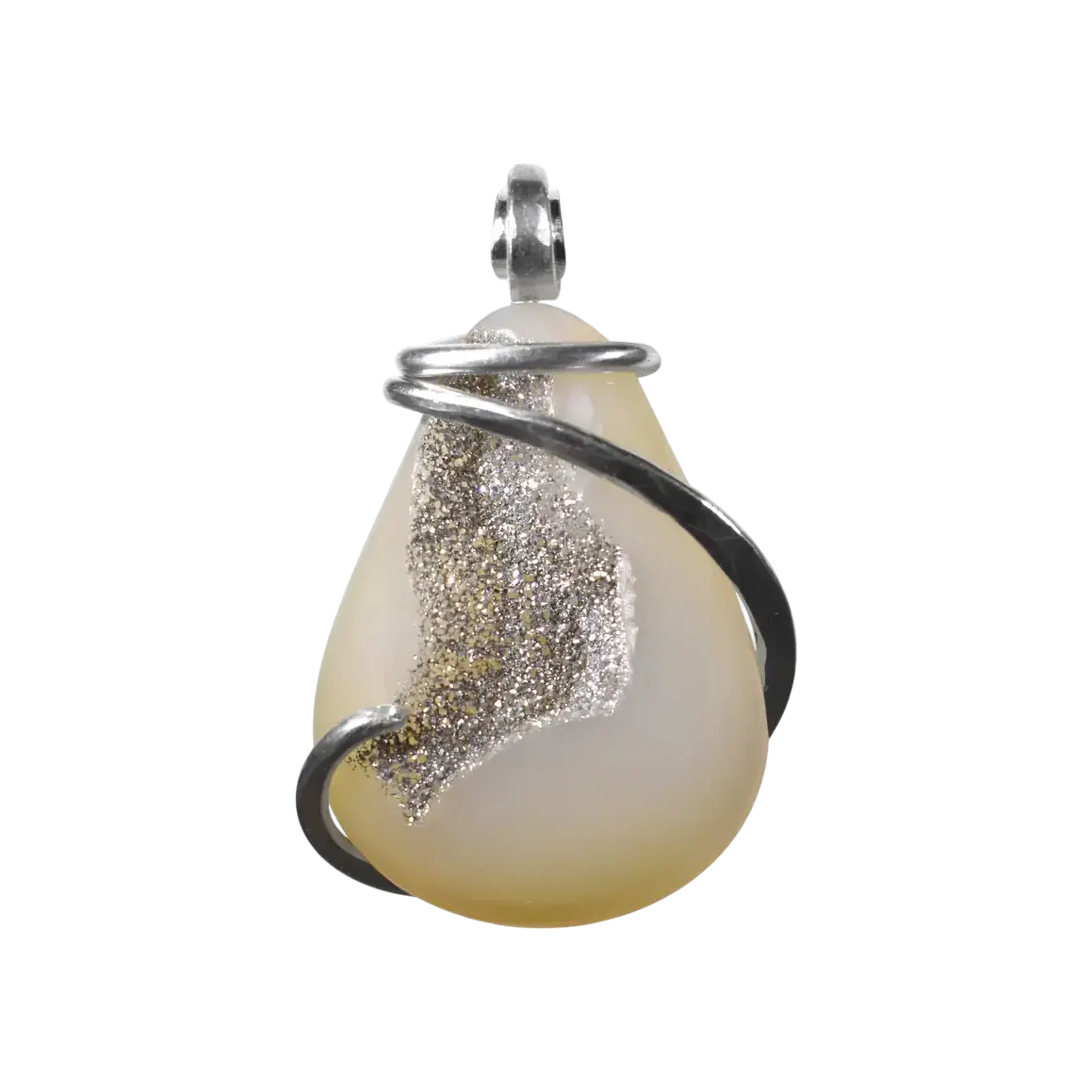
Drusy
Clusters of tiny crystals on the surface of other rocks are called Drusy, Druzy or Druse. This occurs as the porous rock combines with silica-rich water to cool and crystallize, sometimes in meteorites. With a shimmery, sugar-like texture, Drusy comes in many colors and is used in jewelry because it is an affordable and cosmic material, often called "a piece of the galaxy." They believe it brings abundance, prosperity and creativity to its wearers.
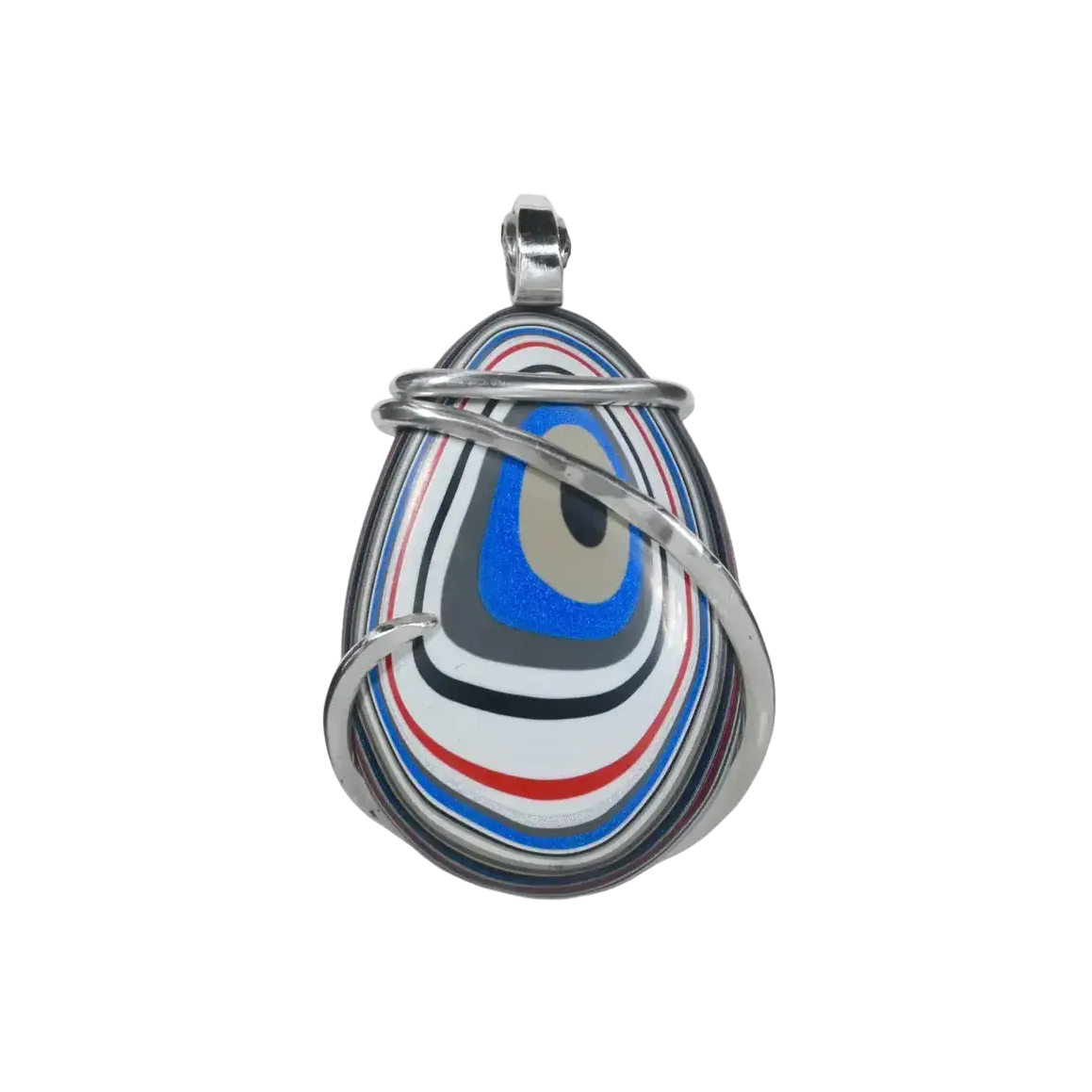
Fordite
Fordite, also known as Detroit Agate or Motor City Agate, refers to polished pieces of hardened automotive paint accumulated in car factories. It formed from layers of enamel paint that built up on skids and tracks during the painting process, repeatedly baked and cured. Now upcycled into jewelry, fordite showcases vibrant, layered patterns reflecting the history of American car manufacturing, especially the changing paint styles and the decline of Ford’s Detroit factories. Though not a true mineral, it carries cultural and historical significance.
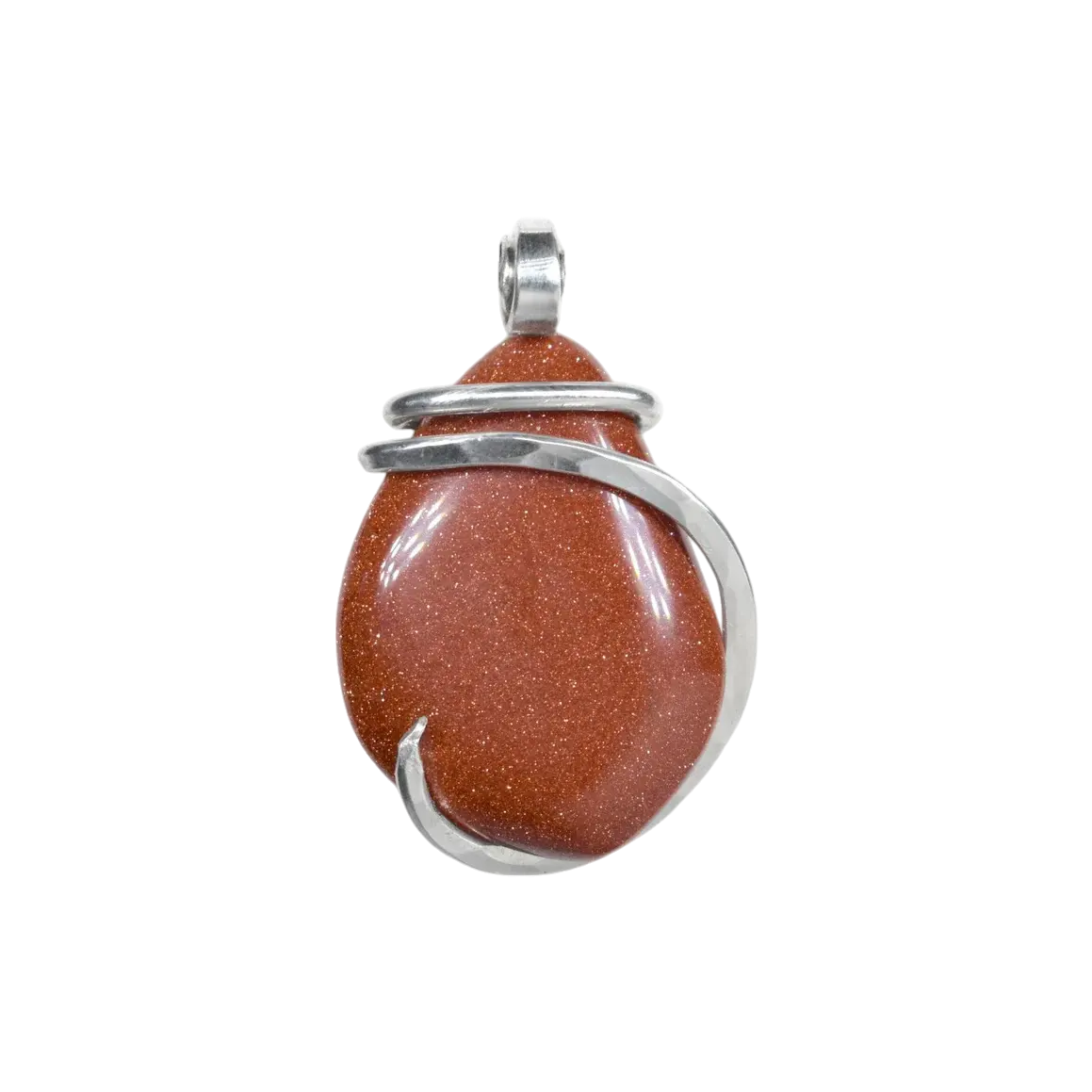
Goldstone
Goldstone, also known as aventurine glass, monk’s gold, or stellaria, is a man-made material celebrated for its shimmering appearance. Legend claims it was accidentally created by Italian monks in the 1600s, though earlier examples, like a 12th-century Iranian amulet, exist. The first documented maker was Vincenzo Miotti of Venice, who received a license from the Doge to produce it. Linked to alchemy, goldstone’s deep red variation, called haematinum, may trace back to Roman times. Known as the "stone of ambition," it symbolizes drive and ingenuity, believed to reduce tension, revitalize energy, and inspire positivity. Modern goldstone is made with copper flecks or other metallic compounds, creating vibrant colors like purple, blue, and green.
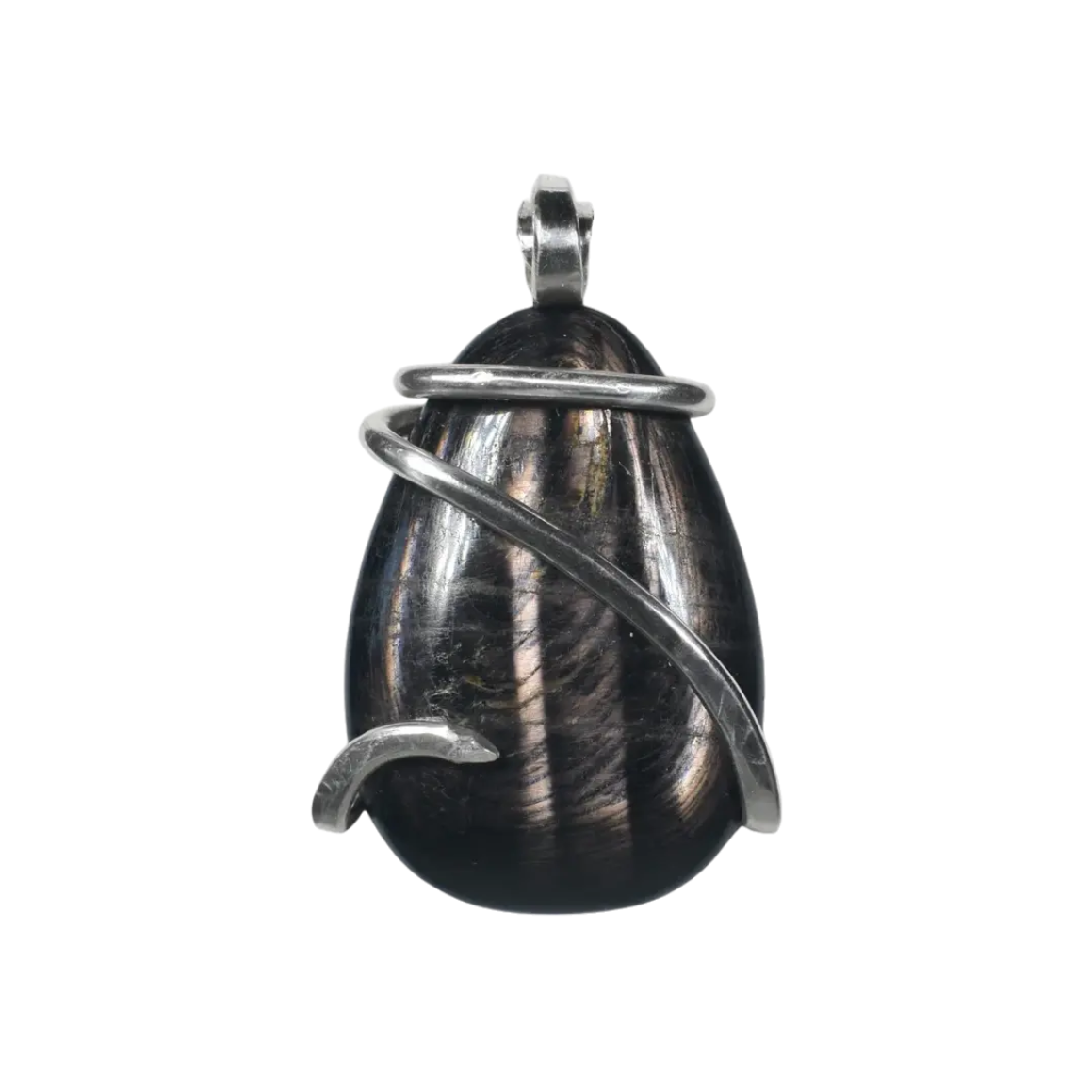
Hypersthene
Hypersthene is a greenish mineral made of magnesium and iron silicate, with its name derived from the Greek for "over strength," referring to its hardness. Often categorized as enstatite or ferrosilite, hypersthene lies between them, containing about 50% iron. Known as a protective stone, it promotes inner calm by grounding the mind and shielding against external distractions, helping wearers organize thoughts and find creative solutions. Ideal for meditation, hypersthene is believed to enhance self-esteem without fostering ego and influences the crown, third eye, throat, solar plexus, and base chakras.
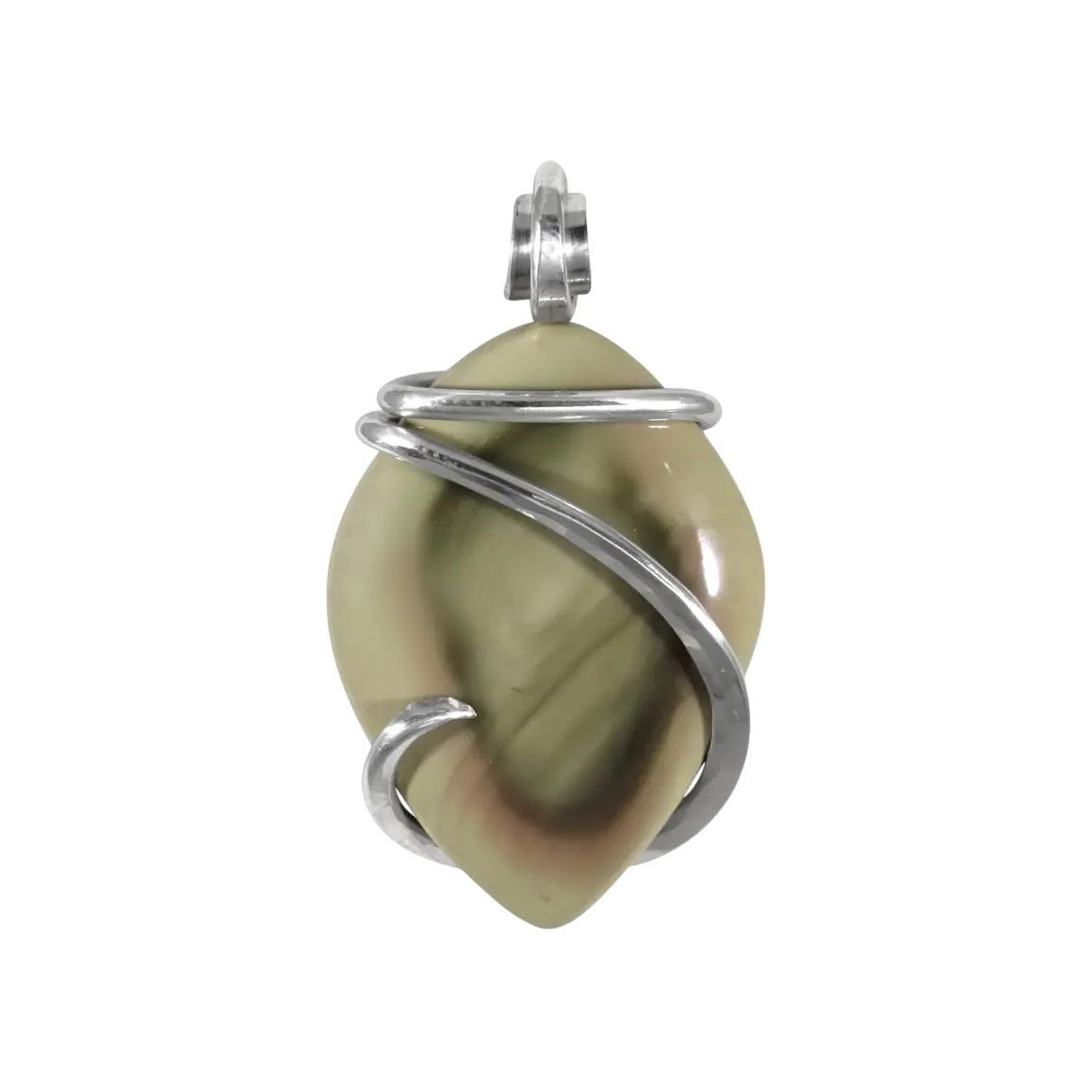
Imperial Jasper
Imperial Jasper has soft pastel colors combining green, pink, cream, brown, and sometimes gray or blue. Many have parallel lines along their surface, and the best - called "Royal Imperial Jasper" - have bands and orbs. Found mainly in the city of Zacatecas in Mexico on a 6-kilometer fault line, it is believed to ease fears, and promote inner calm and confidence. It is also thought to balance physical needs and improve well-being. Like most jaspers, Imperial Jasper offers protection, emotional stability, and grounding.

Kaleidoscope Jasper
Jasper is an opaque, impure variety of silica, composed of microgranular quartz, chalcedony, and other minerals. Typically found in red, yellow, brown, or green hues—rarely blue—its red color comes from iron inclusions. With a smooth fracture, it is valued both as a gemstone and for ornamentation. Known as the “supreme nurturer,” jasper offers support during stress, promoting tranquility, protection, and balance. It absorbs negative energy, balances yin and yang, encourages self-honesty, and fosters courage. Jasper also enhances quick thinking, organization, imagination, and transforms ideas into action.
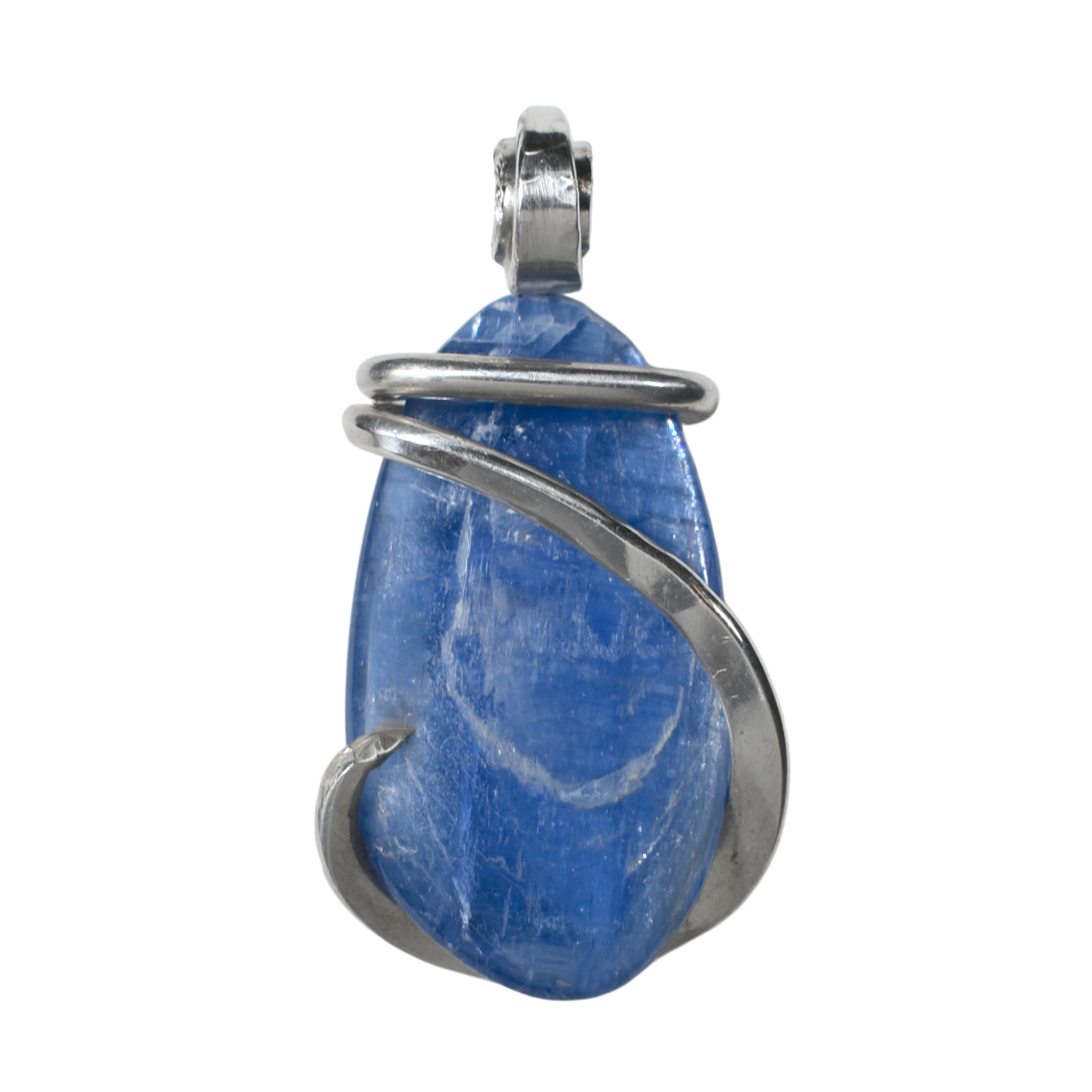
Kyanite
Kyanite, a blue andalusite relative, grows under specific metamorphic conditions and is considered an "index mineral" by geologists for determining the depth, temperature, and pressure in their environment. Named in 1789 by Abraham Werner from the Greek word "cyanos," meaning "blue," it's used in ceramics, electronics, and abrasives. Its high vibration and fast energy transfer make Kyanite a universal bridge for telepathic and psychic enhancement, communication, and healing energy transmission. It also brings the chakras and subtle bodies into alignment and brings peace and calm to the whole being.
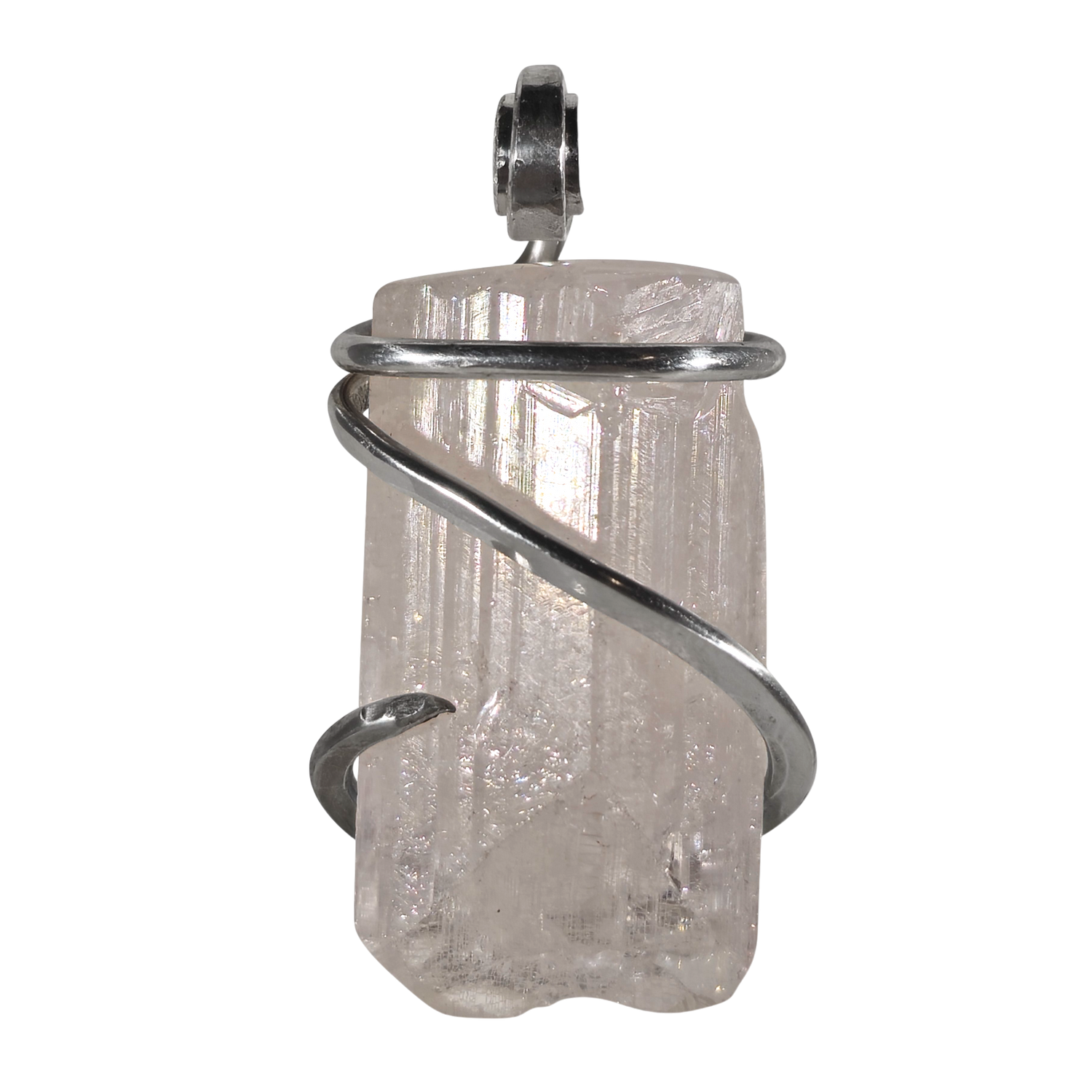
Kunzite
Kunzite, a pink gemstone linked to the heart and love, fosters emotional connection by opening the heart and mind to deeper communion. It is believed to promote the giving and receiving of love, soothe heartache, and calm nerves. Though not a traditional birthstone, it is sometimes chosen as a February alternative, pairing beautifully with amethyst. Kunzite activates the heart chakra and aligns the crown chakra, enhancing emotional and spiritual harmony. Discovered in 1902, it has become popular in high-end jewelry for its size and clarity. Beyond aesthetics, kunzite and other spodumene minerals are used in medicines, ceramics, and batteries.
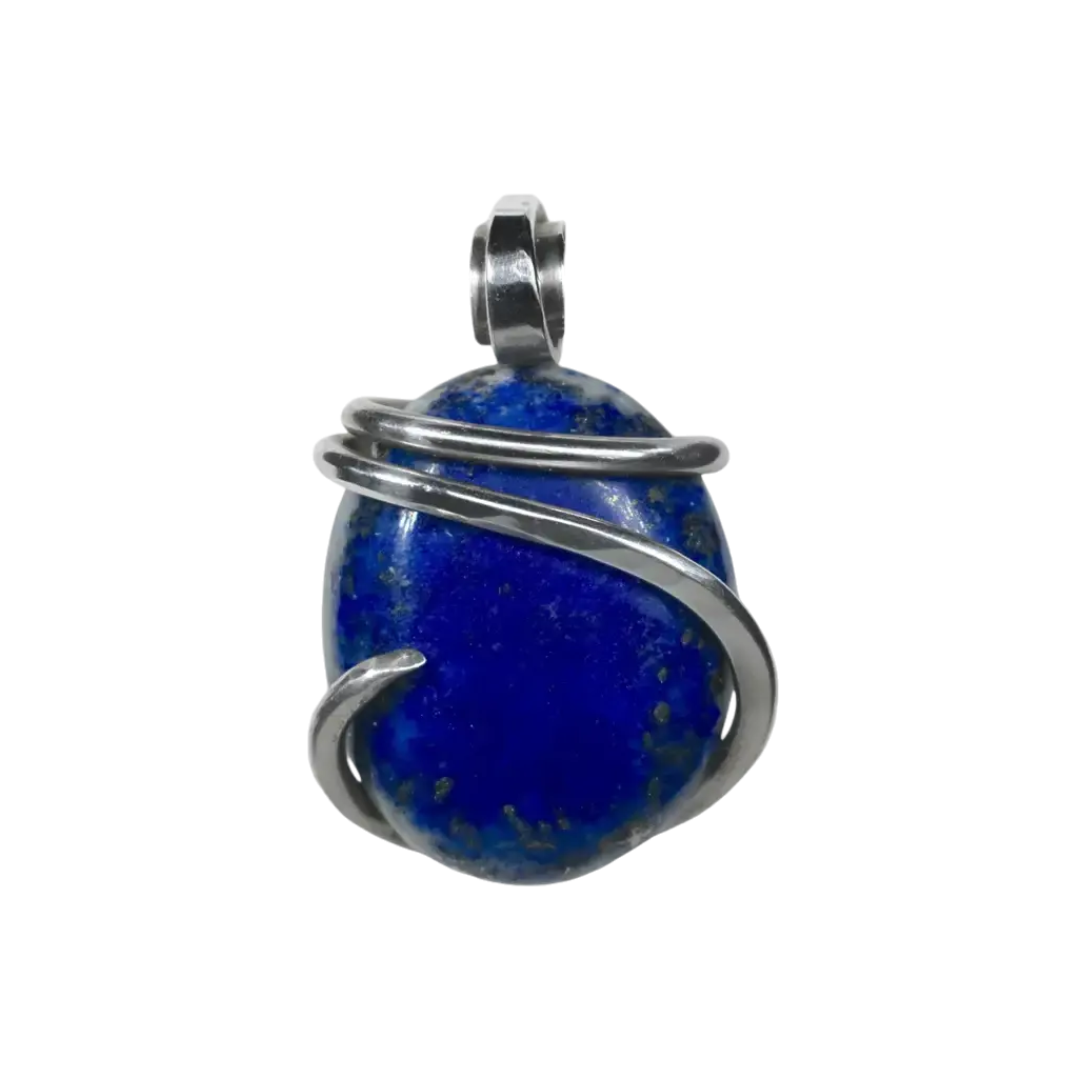
Lapis Lazuli
For over 6,500 years lapis lazuli has represented royalty, wisdom, courage and truth. The Sumerians believed it housed the spirit of gods, and the ancient Egyptians considered it a representation of the night sky. It combines the words lapis (Latin for "stone") and Persian lazhuward (Persian for "blue"). Not a pure mineral, it is a rock made of lazurite, calcite, pyrite, and more. Mined mostly in Afghanistan, lapis has been used in artwork and artifacts since the Middle Ages, including King Tutankhamen's death mask and Cleopatra's eyeshadow. From ground lapis came ultramarine - blue paint in the Middle Ages - used to paint the robes of Mary in the Sistine Chapel. Once thought to ward off evil and improve vision, lapis lazuli is now believed to balance the brow chakra, promote clarity and ease headaches and anxiety.
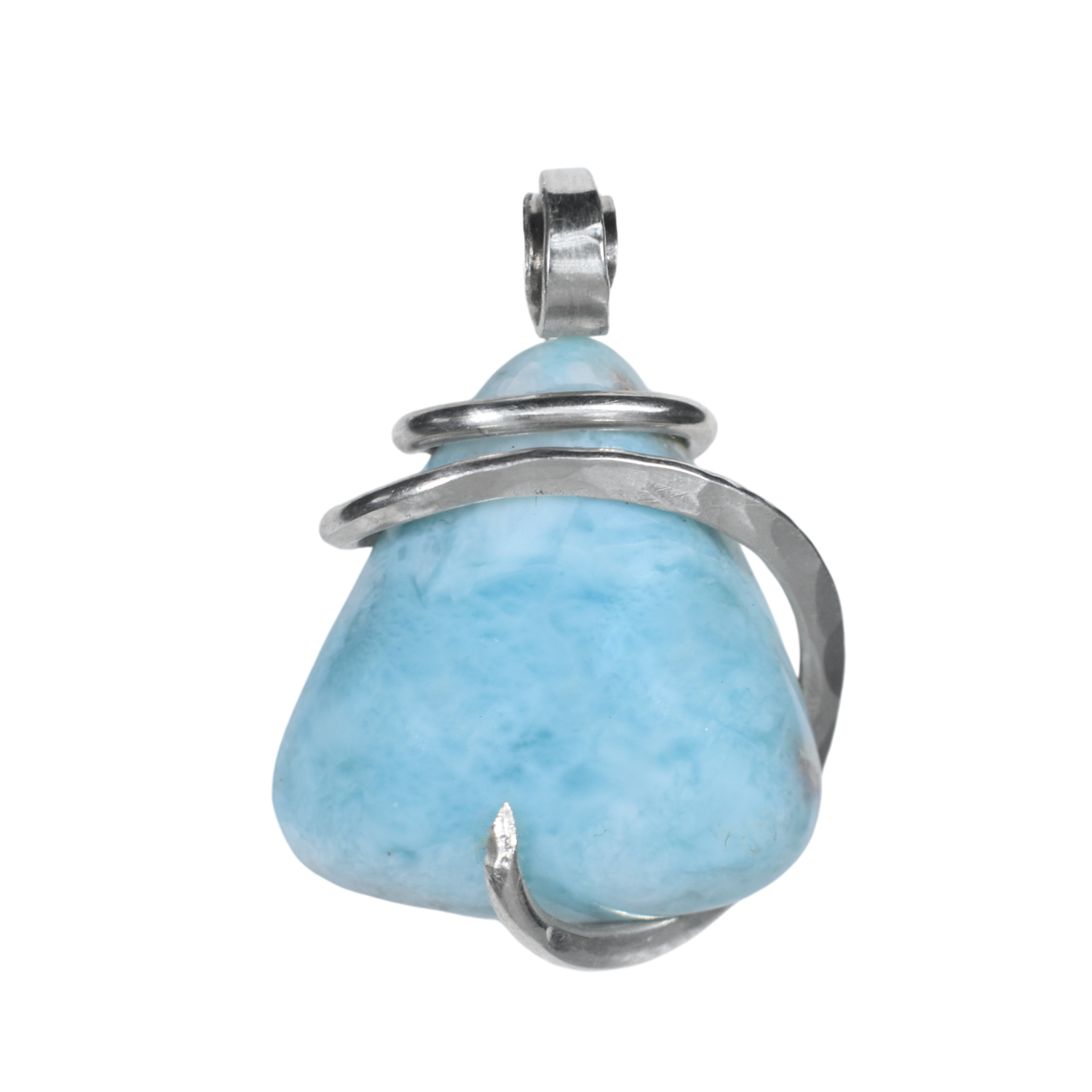
Larimar
Larimar is also called the "Dolphin Stone," "Caribbean Gemstone" and "Atlantis Stone" because it reflects the ocean-blue Dominican waters. Though first reported in 1916 by Father Miguel Loren, Larimar wasn't mined until 1974 when Miguel Mendez and Norman Rilling found it on a Barahona shoreline. The gem is named after Mendez's daughter Larissa and mar (Spanish for sea). Larimar is said to help with relaxation, communication, and balancing of the crown, heart, third eye, and throat chakras. Used as a worry stone in holistic healing, it is said to calm the mind when rubbed.
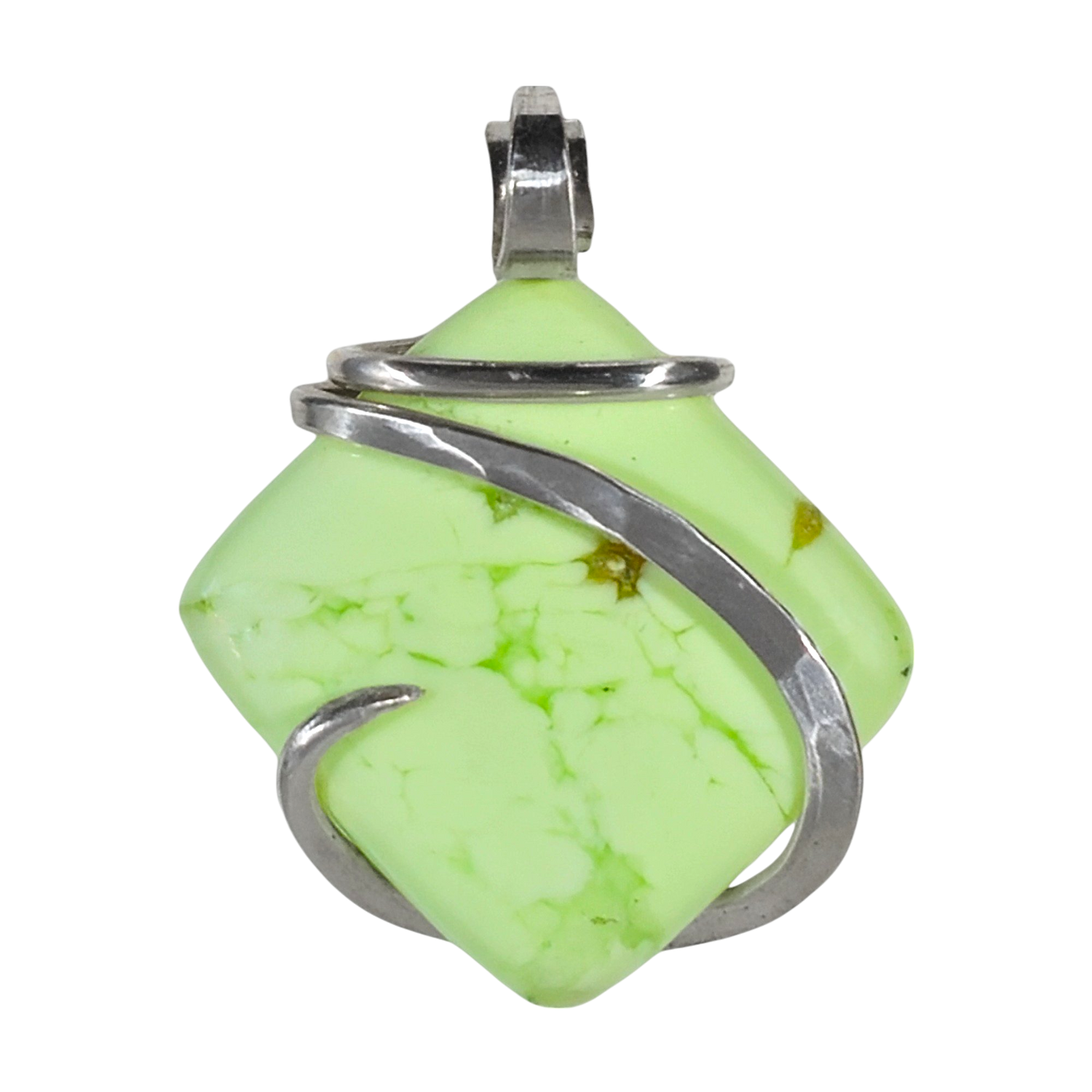
Lemon Magnesite
Although mistakenly believed to be a type Chrysoprase, Lemon Magnesite, also known as Lemon Chrysoprase or Citron Chrysoprase, is not a true chrysoprase but a yellow-green variety of magnesite found only in Western Australia. It's typically found in chrysoprase mines and may grow alongside it, giving the species the common name. This stone is a source of wonder, joy, questioning, and gives hope and action when challenged. A source of unconditional love and kindness especially during hard times, it promotes emotional balance, spiritual connection, and positive energy. The lemon chrysoprase also makes us question old beliefs, change perspectives, and apply insights for growth. It also sharpens listening and comprehension skills.
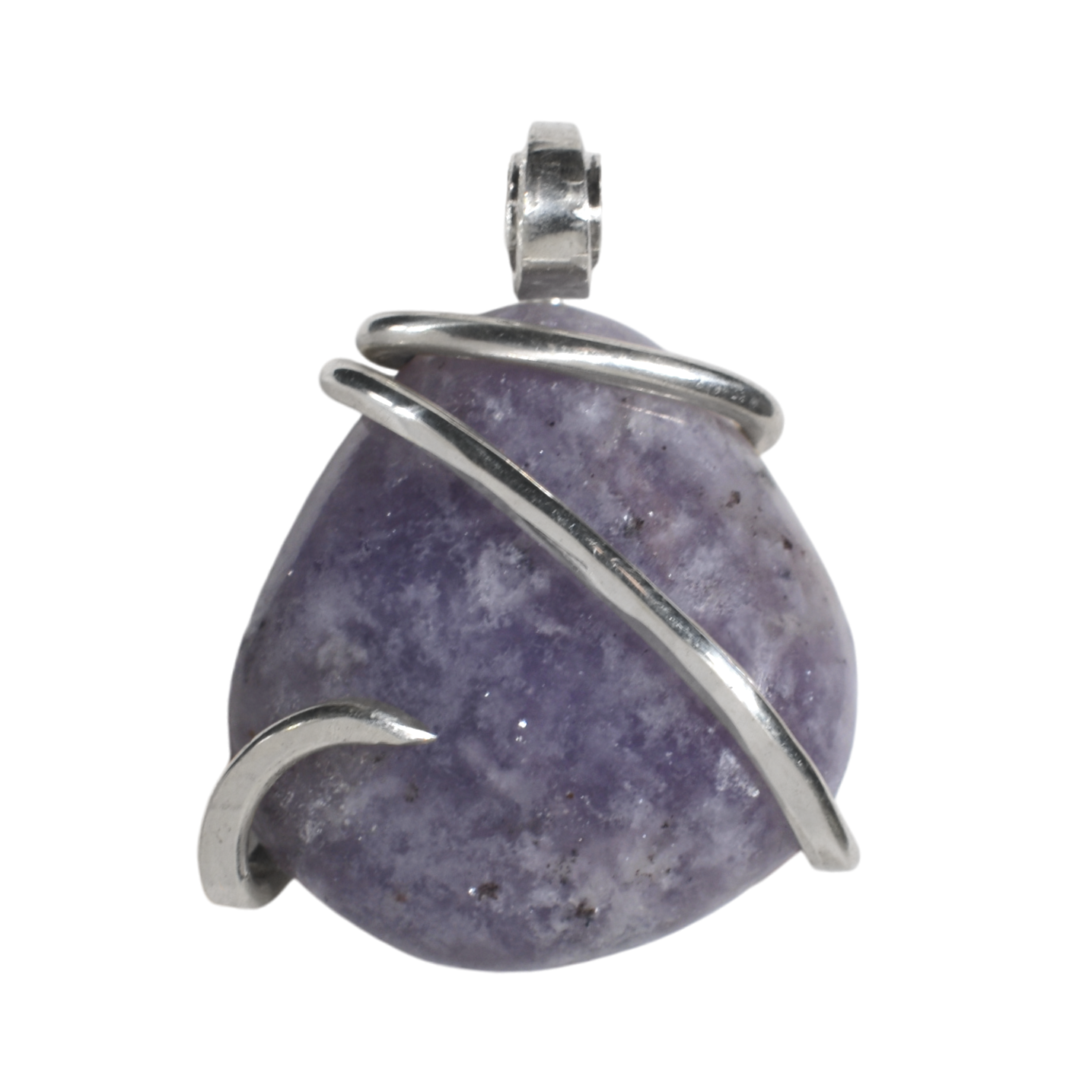
Lepidolite
Lepidolite, a lithium-aluminum potassium mineral and a common member of the Mica family, is often found as masses, plates, stacked sheets (“books”), or prismatic crystals. Its distinct pink and purple hues come from trace amounts of manganese impurities. The name “Lepidolite” is derived from the Greek words “lepidos” (scale) and “lithos” (stone). This crystal is found worldwide, with notable deposits in Brazil, Madagascar, Australia, Russia, Japan, Canada, the UK, Mexico, and the United States. Lepidolite is known as a “stone of hope,” often referred to as the “peace stone” or “transition stone.” It is believed to encourage emotional healing and uplift spirits during challenging times, helping to bring brighter emotions and promote inner peace.
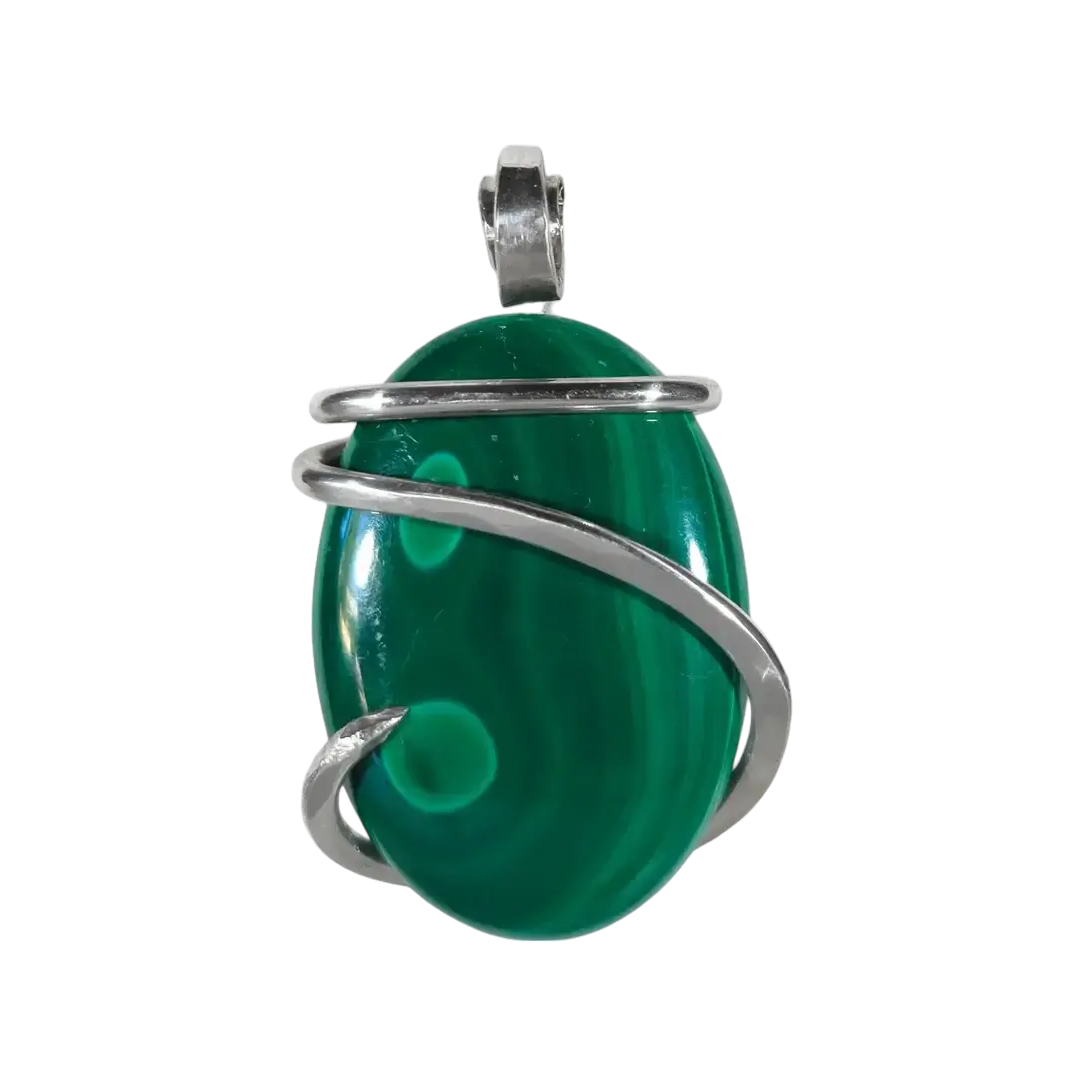
Malachite
Malachite has green swirls and marbled patterns and stands for sensuality, beauty, and transformation. Its eye-like rings resemble peacock feathers and have long been admired. Malachite was used in jewelry, art, and paintings, sourcing it from King Solomon’s copper mines. It was also thought to ward off evil in children, and small pieces were hung near cribs to aid in sleep. Malachite is "the stone of transformation" - it covers emotional pain, comforts during change, and promotes personal growth. The stone brings harmony and insight, and is appropriate for new beginnings, creating desires and avoiding danger or illness. Looking at malachite patterns is said to refresh and uplift the spirit.
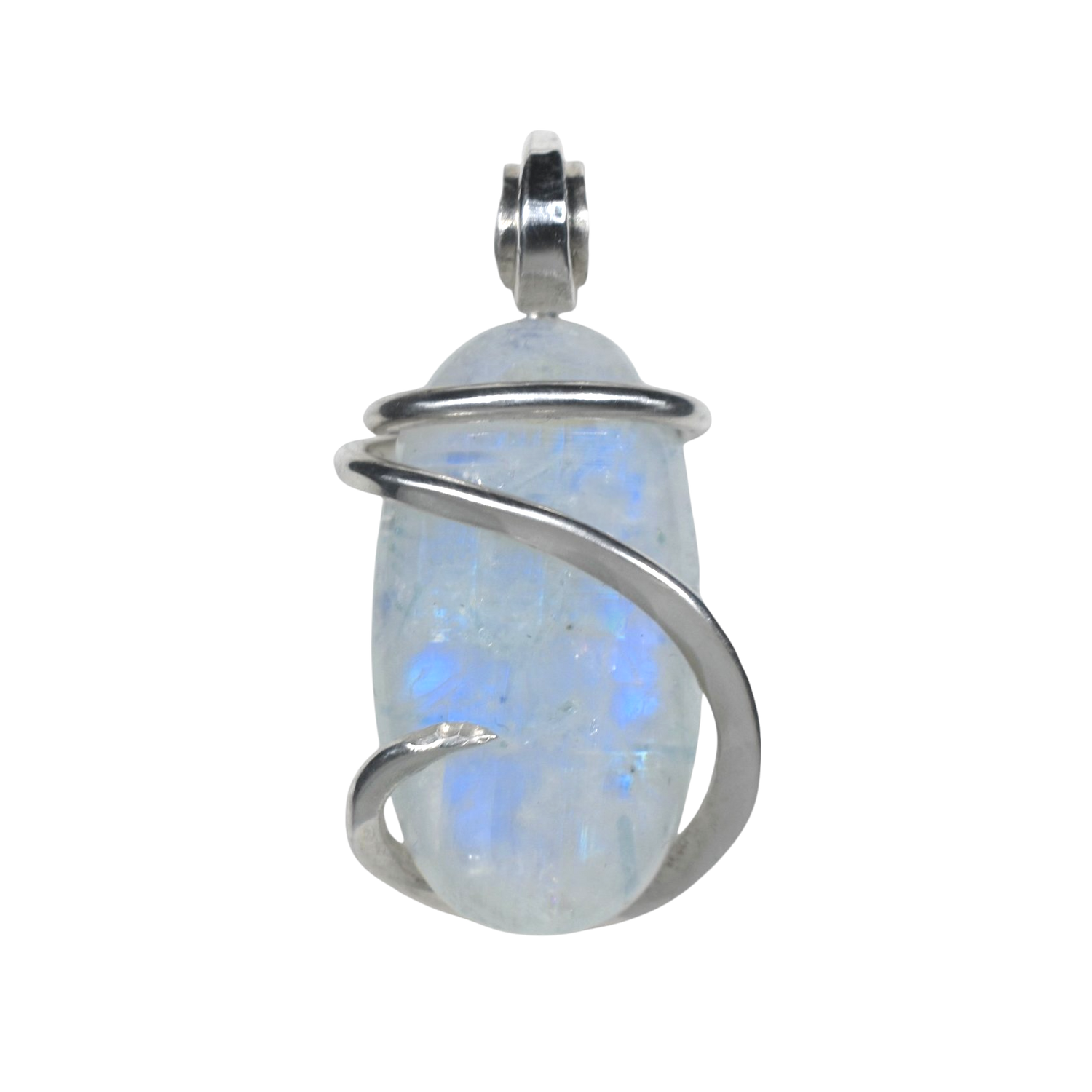
Moonstone
Moonstone has a soft, moonlight sheen. Popular rainbow moonstone has iridescent flashes that are opaque to semi-translucent. It has been used in jewelry for centuries as the Romans thought it was made of solidified moonbeams and associated it with their lunar gods. Moonstone is said to bring clarity, intuition and creative insight. It represents harmony, hope and balance, showing people how to move past difficulties and accept change with courage and compassion.
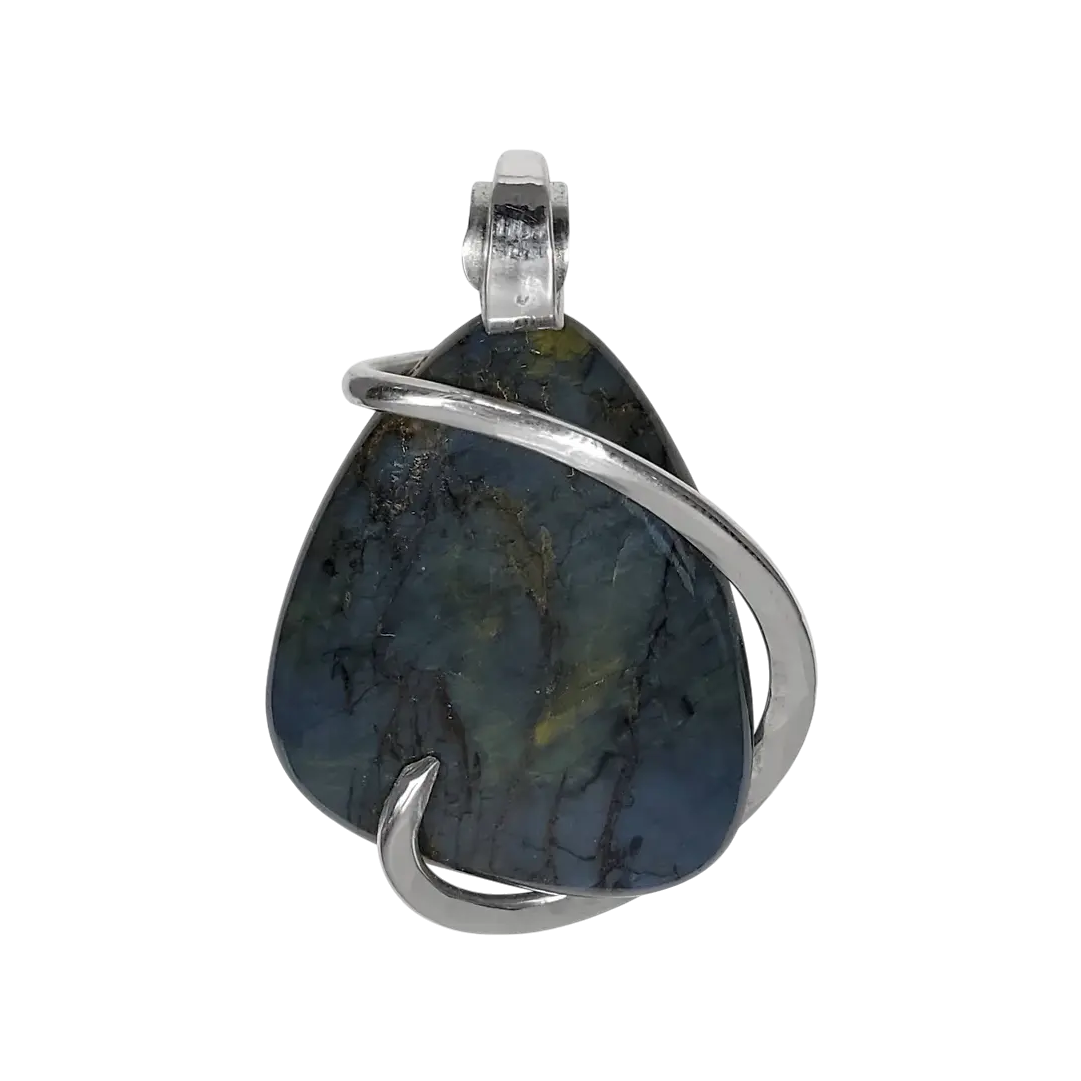
Nellite
Nellite, also known as Lionskin or Honey Stone, is a brown, golden, and blue stone produced by Tiger's Eye and Pietersite. Such a rare gem is collected by both collectors and jewelry enthusiasts and is found mostly in Namibia with some production in China. The Tiger's Eye component adds golden tones representing sunlight and the Pietersite blue and brown representing sky. Nellite provides mental clarity, concentration, and stability. This supports meditation, reduces pain and swelling, increases blood circulation, and supports the body to heal itself, helping spiritual seekers stay on course.
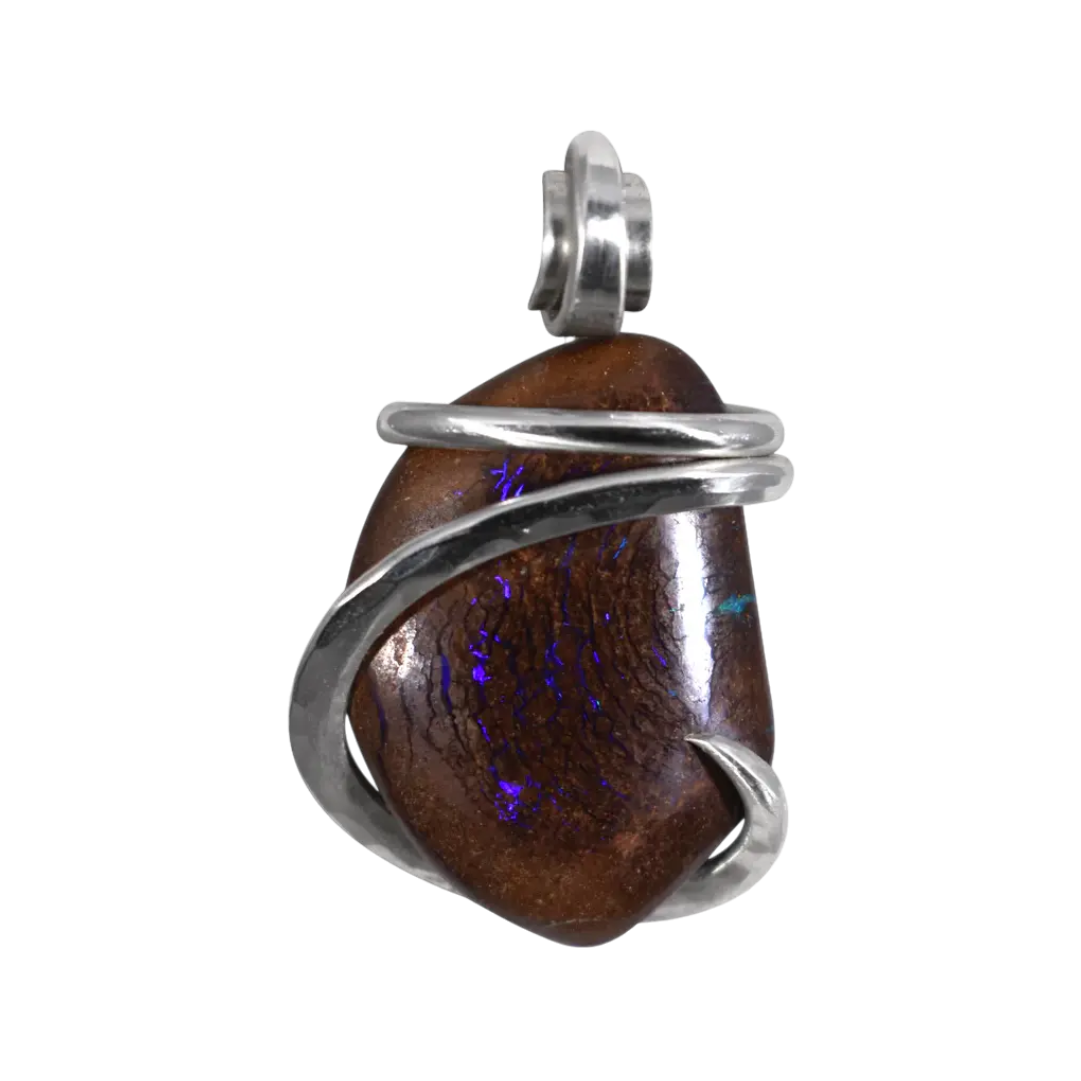
Opal
Opal is a hydrated silica mineral that consists of tiny silica spheres bound with water. It can come in two forms: common, which is opaque and varies in color; and precious, which has a "fire effect" because regular silica spheres scatter light. It was thought by the Greeks to be a sign of prophecy and illness, from the Sanskrit upala meaning "precious stone." Opal is now an October birthstone along with pink tourmaline and represents luck and magic. They say its play of color stimulates creativity, pleasure in life, and vision. It is believed that opal is associated with the sacral chakra and can therefore regulate emotions and moderate desires. In European traditions it represents hope, purity and truth.
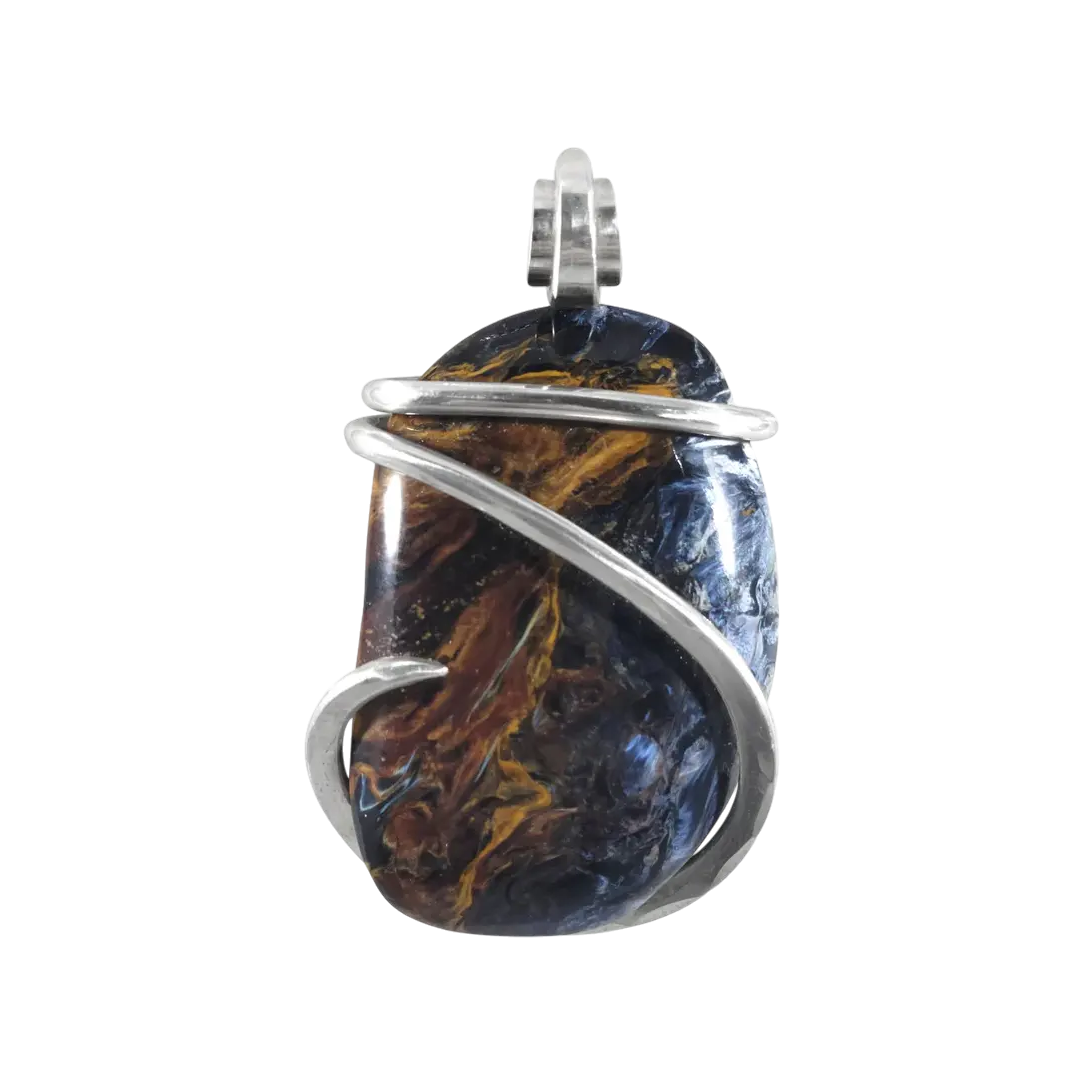
Pietersite
Pietersite, or "eagle's eye," was found in Namibia by Sid Pieters in 1962, hence the name Pietersite. This brecciated hawk's eye and tiger's eye chalcedony is a swirled blue stone nicknamed "tempest stone." Known to ground and cleanse, Pietersite is said to dispel negative energy, calm emotional storms and enhance meditation by raising spiritual awareness. Associated with the sacral, solar plexus and third eye chakras, it is said to increase willpower, intuition and vision seeking journeys. Pietersite is generally cut in cabochons with care to match the fibrous structure of the stone for its characteristic chatoyancy.
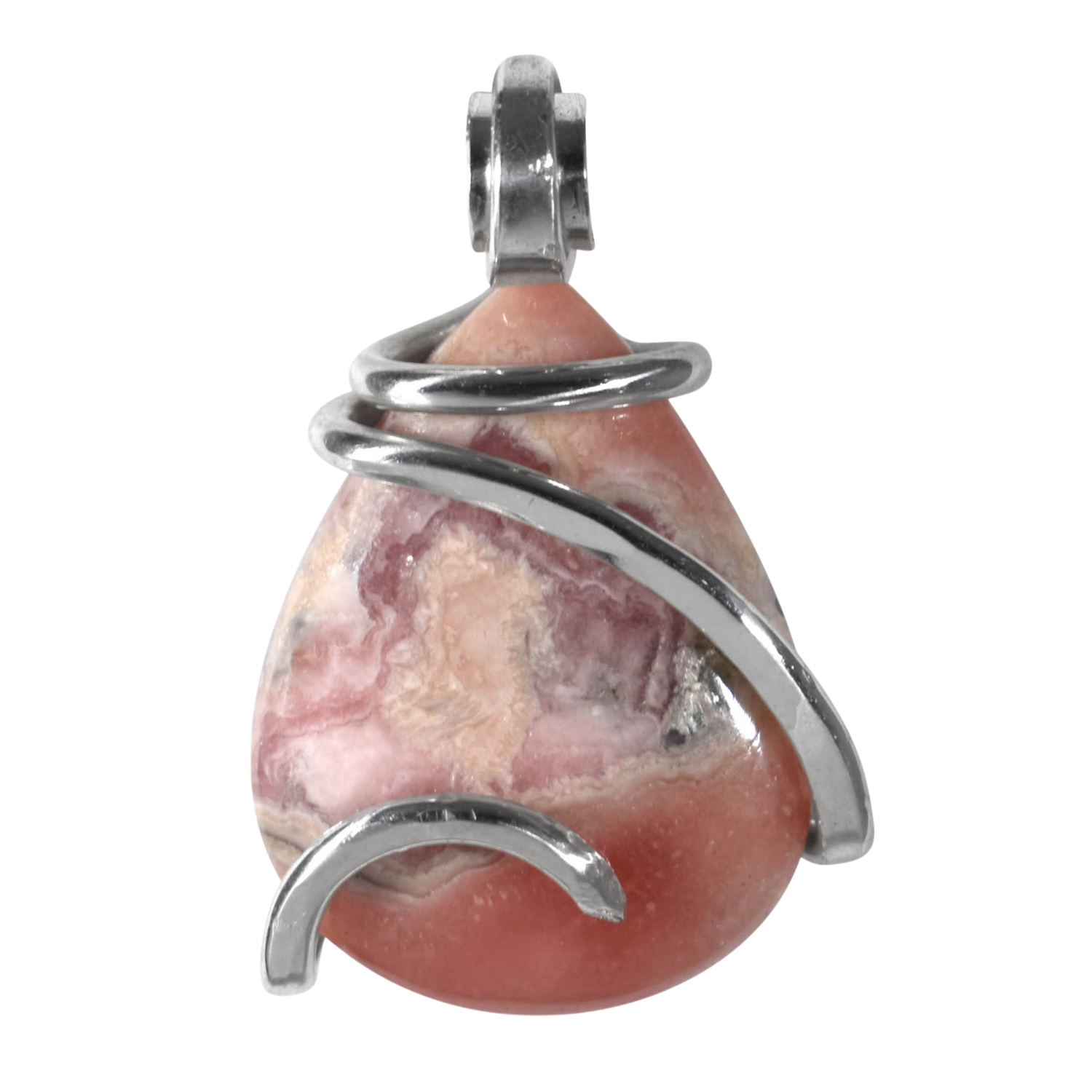
Rhodochrosite
Rhodochrosite is sometimes called Inca Rose and, nowadays, is found mainly in Argentina. And it's the official state mineral of Colorado - rare, well-formed crystals from the Sweet Home Mine near Alma. Known as the stone of compassion, rhodochrosite stimulates loving kindness and emotional growth. This creates adventures and allows us to know our deepest desires and to accept change with open arms.
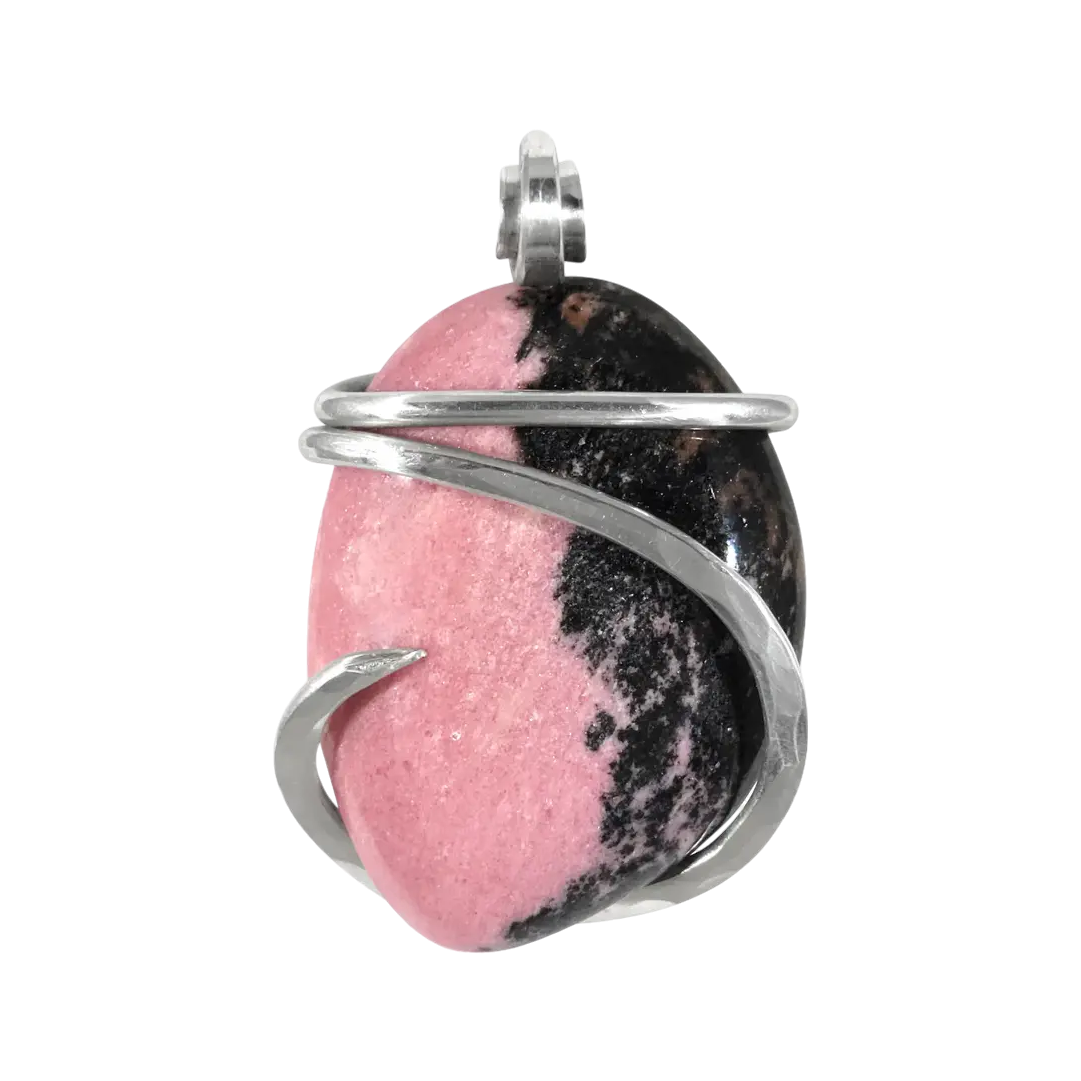
Rhodonite
Rhodonite is a rose-colored stone derived from the Greek word rhodos. In Russia, 80 square meters of rhodonite columns line the Moscow Metro's Mayakovskaya Station. A 1930s discovery in Argentina of banded rhodonite spurred its popularity and in 1979 it was named the state gem of Massachusetts. Wearing rhodonite brings relaxation and renewal - letting go of the small things, enjoying leisure time, and seeing the big picture. This rosy stone is related to the heart chakra and brings the wearer love and emotional balance.
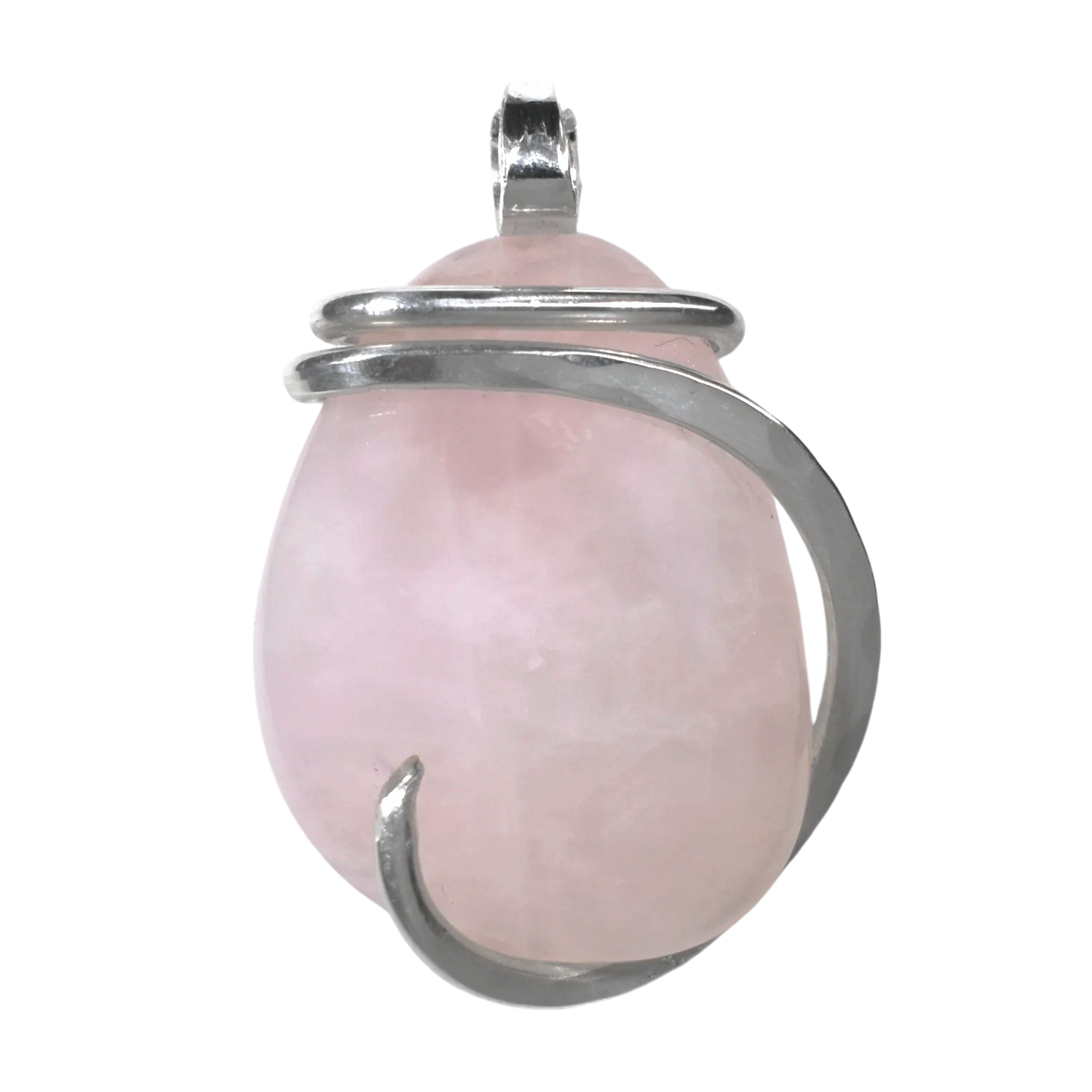
Rose Quartz
Rose Quartz, a silicon dioxide crystal and a common member of the Quartz family, is found worldwide in massive form without crystal faces or edges. Typically hazy to translucent, it forms in the cores of granite pegmatites and ranges in color from pale pink to deep reddish pink due to trace amounts of titanium, iron, or manganese. Occasionally, microscopic inclusions of rutile or borosilicate produce a star or cat’s eye effect in polished pieces. Known as the “Crystal of Unconditional Love,” Rose Quartz carries a gentle, feminine energy that promotes compassion, peace, and emotional healing, resonating deeply with the Heart Chakra.
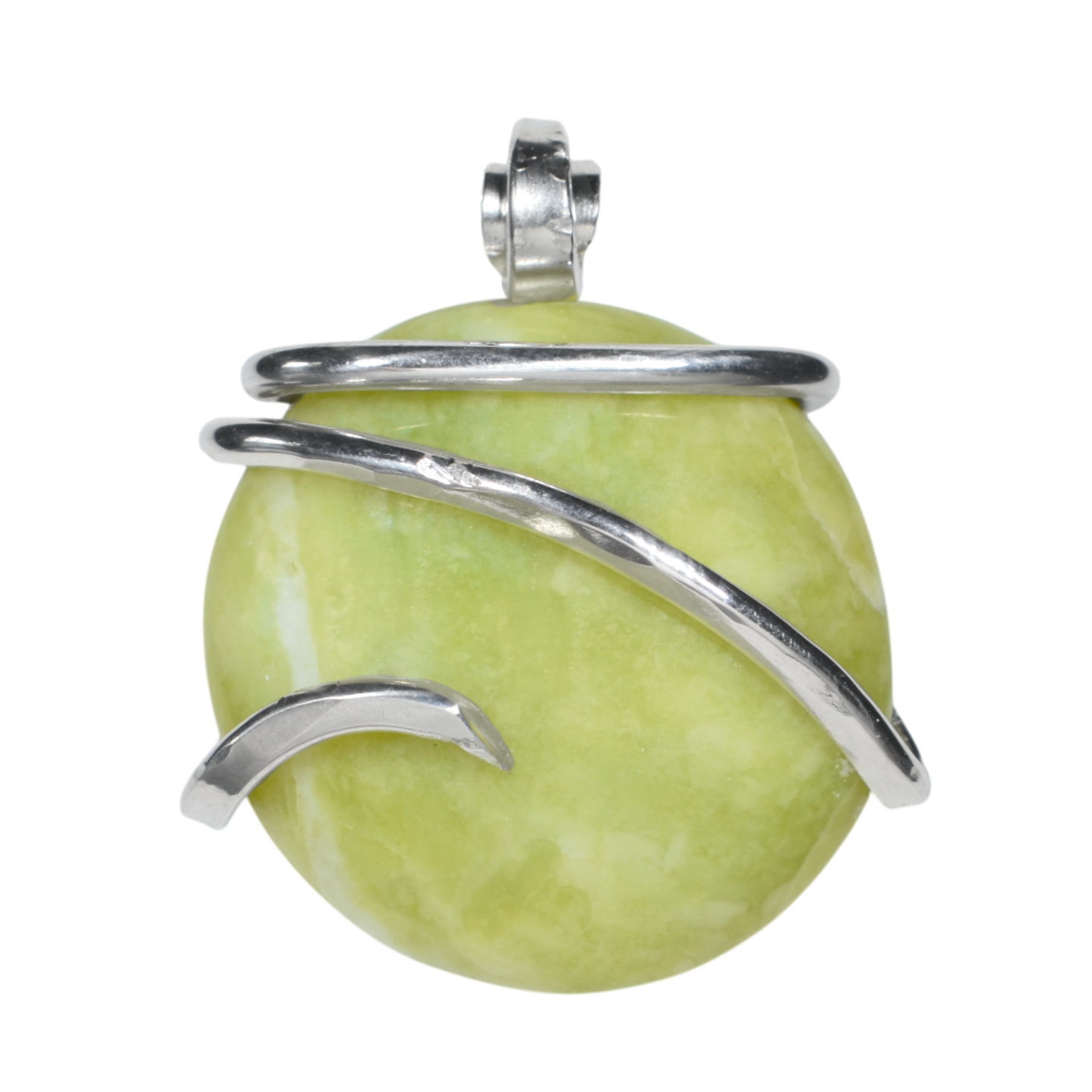
Serpentine
Serpentine, also called "precious serpentine," was named in 1564 by Georgius Agricola, inspired by its snake-like, mottled appearance (from the Latin serpens, meaning serpent). Known by trade names like False Jade and Teton Jade, serpentine is often mistaken for Jade, Onyx Marble, or Verdite due to its veined or spotted patterns. Historically, it has served as a decorative stone, a source of magnesium, and even in architecture. Metaphysically, serpentine is thought to help bring control over one’s life by clearing mental fog, enhancing meditation, and stimulating the crown chakra to promote spiritual insight and psychic abilities.
